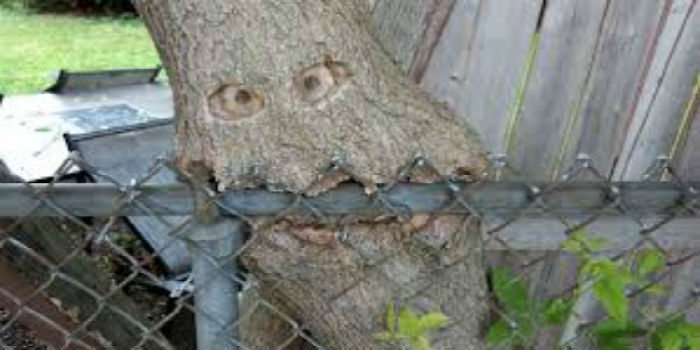The layout of the site is not an easy and troublesome task. Novice gardeners try to place as many useful plants as possible in a small area. At the same time, they often forget about the need to comply with the standards prescribed in SNiP, namely the distance to the fence from trees and shrubs.
Why comply with regulations
The distance between plantings is important not only for their normal development and fruiting. Over the years, an increasing crown and root system can cause many problems not only for the owner, but also for his neighbors:
- powerful roots can destroy the foundation of buildings, structures, a fence, equipped paths;
- when close to the power line, the crown, touching the wires, will create an emergency;
- an overgrown root system can damage underground communications, interferes with their repair;
- large trees near buildings interfere with fire fighting and repair work.
Failure to comply with the established SNiP distance from the fence to the trees leads to disagreements with neighbors. The branchy crown casts a shadow on a neighboring site, making it difficult to cultivate vegetable crops, clogging it with crumbling fruits and leaves. And it will be difficult for the most unlucky amateur gardener to take care of fruit trees and harvest them.
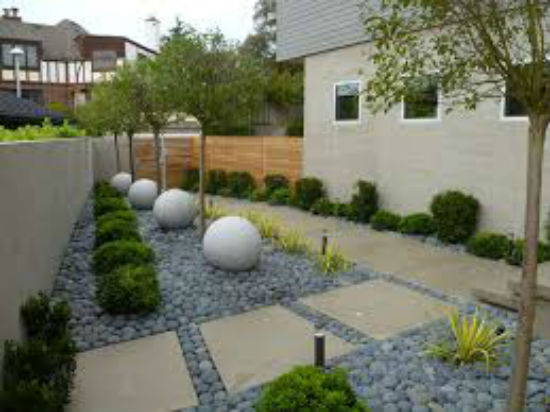
The distance from the fence to the fruit trees
Choosing varieties of fruit trees for your garden, take an interest not only in their productivity, especially in the care and planting. Find out and write down their future height. For example, some tall varieties of pears and apple trees grow by 15 m. They must be planted at a distance of at least 5 m from the boundary.
Trees that are 10 meters high are considered medium-tall. These include cherries, cherries, plums, hazel, viburnum, apricot. In this case, the distance to the fence from the trees should be at least 2 m.
Dwarf cherries, apple trees can grow at a distance of 1 m from the neighboring site.
If you cannot comply with the norms of SNiP during landing, it must be agreed with a neighbor. So that after a few years there is no disagreement about this, take a written permission.
While the planted young trees take up little space, beds are placed between them, and low-growing shrubs along the fence. As their crowns increase and the shade of the planting area of photophilous crops is reduced. Instead, they can plant shade-tolerant plants. You not only rationally use the free area, but also relieve the garden of weeds.
Standards for planting ornamental trees

In addition to growing fruit and berry crops in modern landscape design of personal plots, the use of ornamental plants has become widespread in recent years. Most often they plant thuja, birch, sakura, oak, linden, maple, chestnut, willow. But the leaders can still be recognized conifers.
When determining the distance from the fence to the trees, consider their future height. In addition, be sure to take into account the powerful root system, which grows no less than the crown.
When planting tall species, consider not only the distance from the tree to the fence with a neighbor, but also to buildings, structures, landscaped walkways, water intake structures, underground utilities, including in the neighboring area.
Tall trees can be planted at a distance:
- from a residential building and other architectural structures - at least 5 m;
- gas, water supply, other communication lines and engineering systems - 1.5 m;
- power lines - 1.5 m;
- edges of garden paths - 0.7 m;
- carriageway - 1.5 m.
Shrub planting standards

Shrubs are stunted plants, so they, like trees on a dwarf rootstock, can be planted at a distance of 1 m from the fence. But experts advise to increase the decorativeness of fences, to facilitate the care of planting, increase it to 2-3 m.
Some homeowners prefer to use a decorative fence instead of a fence. But you can land it only after agreement with the neighbors. Take written permission from them.
If agreement on this issue could not be reached, plants can be planted a meter from the border of the plots. At the very boundary, it is advisable to install a fence, at least a netting net. The width and length of your decorative fence can be any, this is not regulated by law.
Shrub varieties are most often used as hedges:
- low - boxwood, Japanese spirea;
- the middle ones are Forsythia, cotoneaster brilliant, oak-leaved argument, van Gutt's spirea;
- high - kagan (yellow acacia), hawthorn, barberry.
These are the most unpretentious breeds grown in temperate continental climate.
How to measure distance
When planting, it is important to correctly measure the distance between the tree and the fence, so that in the future the neighbors will not be able to make a complaint about the overgrown crown of your apple tree, pear or nut. It is measured from the center of the trunk. If all SNiP standards are met, then such requirements are considered unreasonable and are not taken into account.
If, following the established distance from the trees to the fence, excess space has formed, place flower beds, a vegetable garden, a children's swing, a sandbox or garden figures there.
If the neighbors do not keep the distance from the fence to the trees in the country
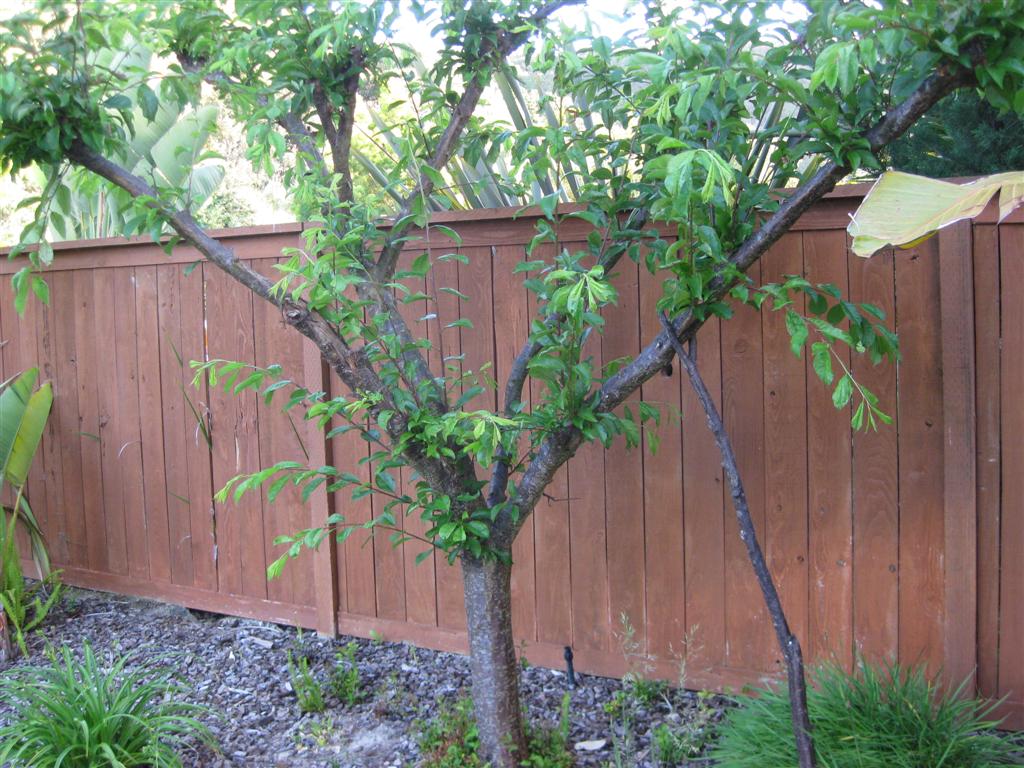
Try to negotiate with your neighbors and resolve conflicts peacefully. If the plant is small, it is better to transplant it. An overgrown tree will have to be cut and uprooted.
If you have any disputes, regardless of whether they make claims to you or violate your land ownership rights, carefully study the current land legislation, rules and norms of Construction Norms and Regulations.
If you cannot reach an agreement, contact an architectural or horticultural authority. If the conflict remains unresolved, you will have to go to court to resolve the dispute.
Consequences due to non-compliance with SNiP
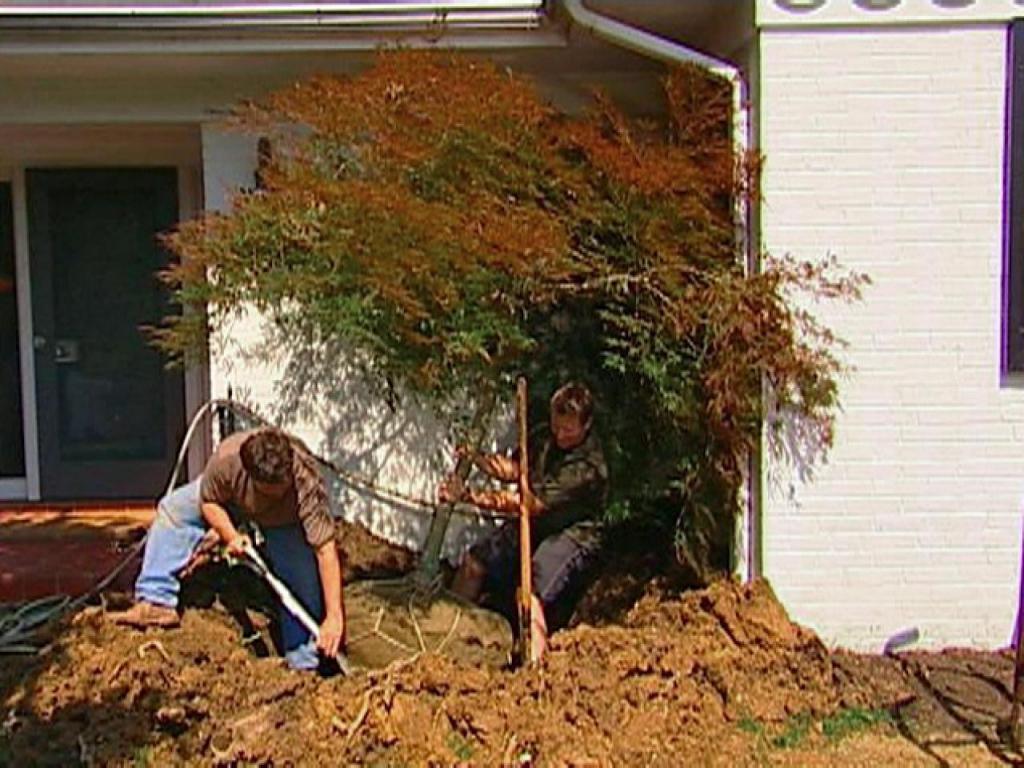
Failure to comply with the established distance from the fence to the trees may result in future troubles, such as:
- violation of the law (technical standards and safety rules);
- disagreements with neighbors (it is easier to plant a plant correctly initially than to cut an overgrown, abundantly bearing tree);
- damage to one’s neighbor or one’s property (crown destruction of windows, fences, foundations, light buildings, damage to power lines);
- damage to other plantings (loss of productivity due to thickened plantations, oppression by tall plants of undersized plants).
Tips
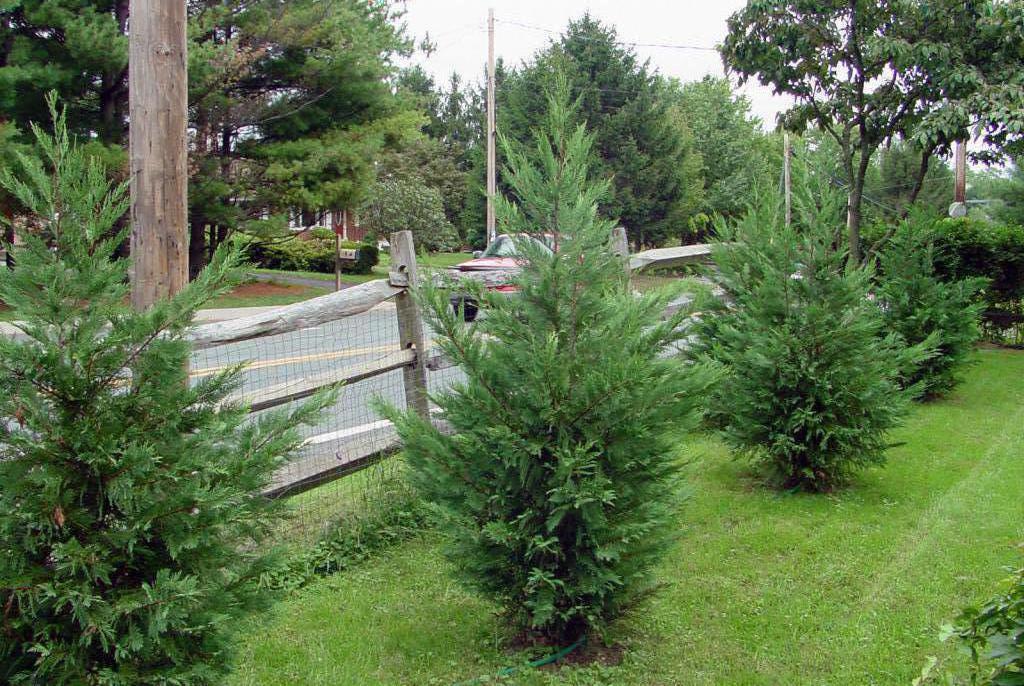
The above norms and rules apply to individual household plots. For farm land other requirements are relevant.
Taking care of compliance with the standards when planting shrubs and trees, do not forget about the need to maintain the optimal distance between plants.
Do not thicken the landing. This makes it difficult to care for them, reduces productivity, worsens the appearance, promotes the spread of diseases and pests, inhibition of stronger weaker plants.
Try to keep abreast of current changes in land legislation, as amendments are often made to it. Work on the planning of the site, especially if you are not sure about the interpretation of the law, coordinate with the relevant authorities. This will avoid many problems in the future.
